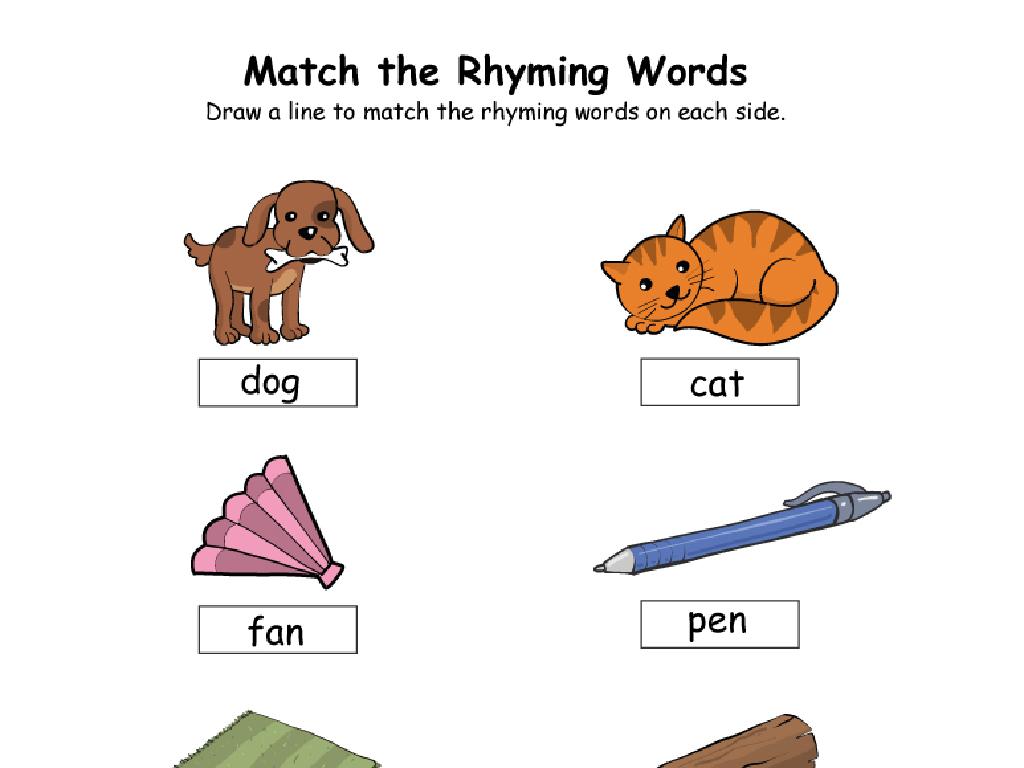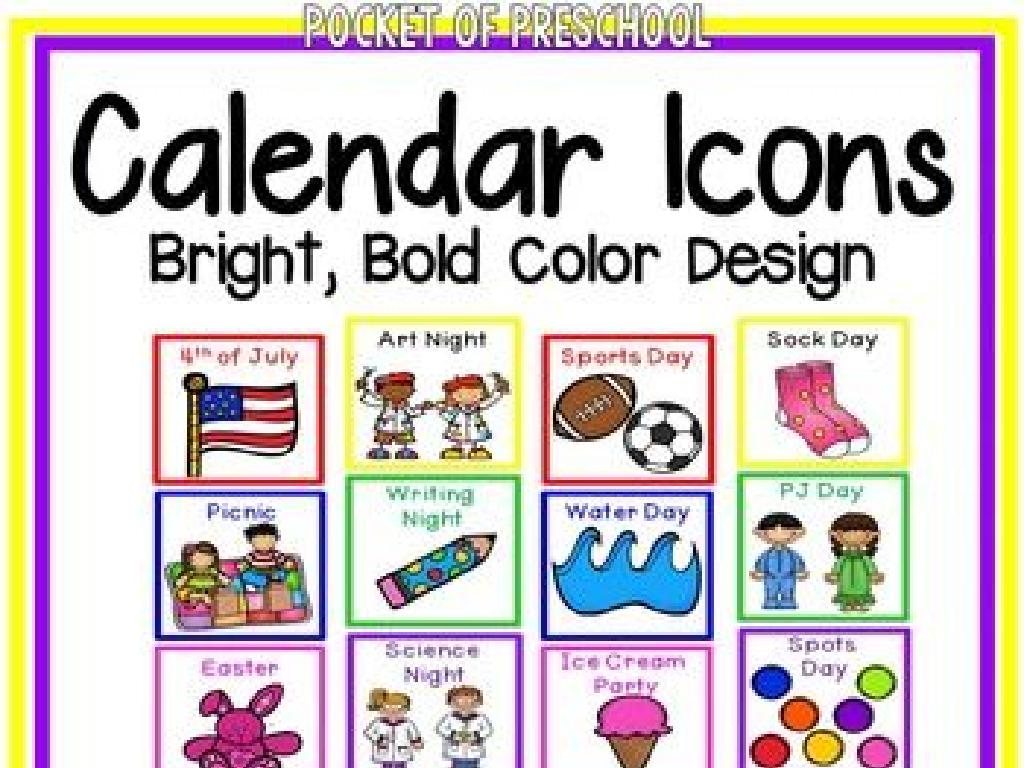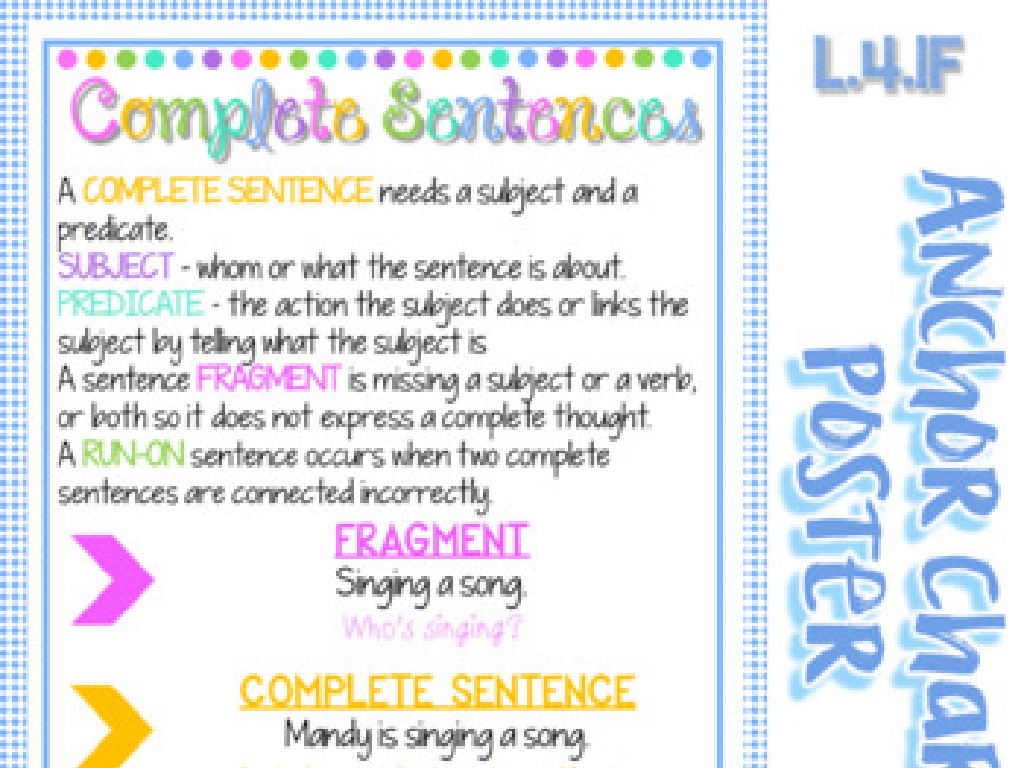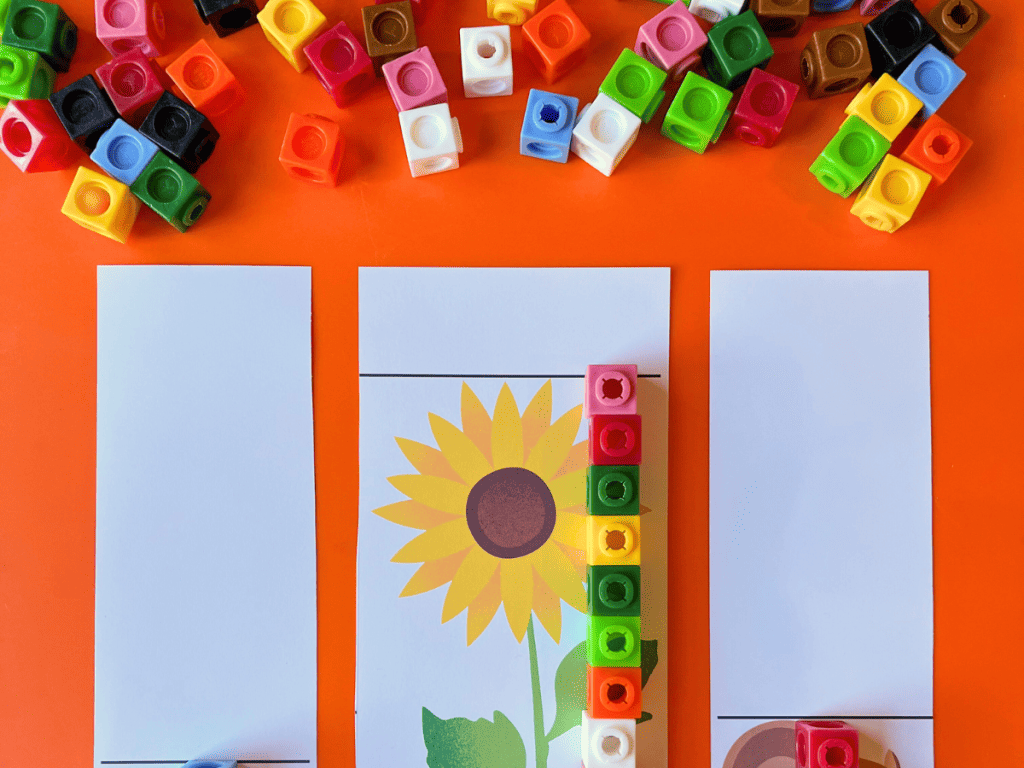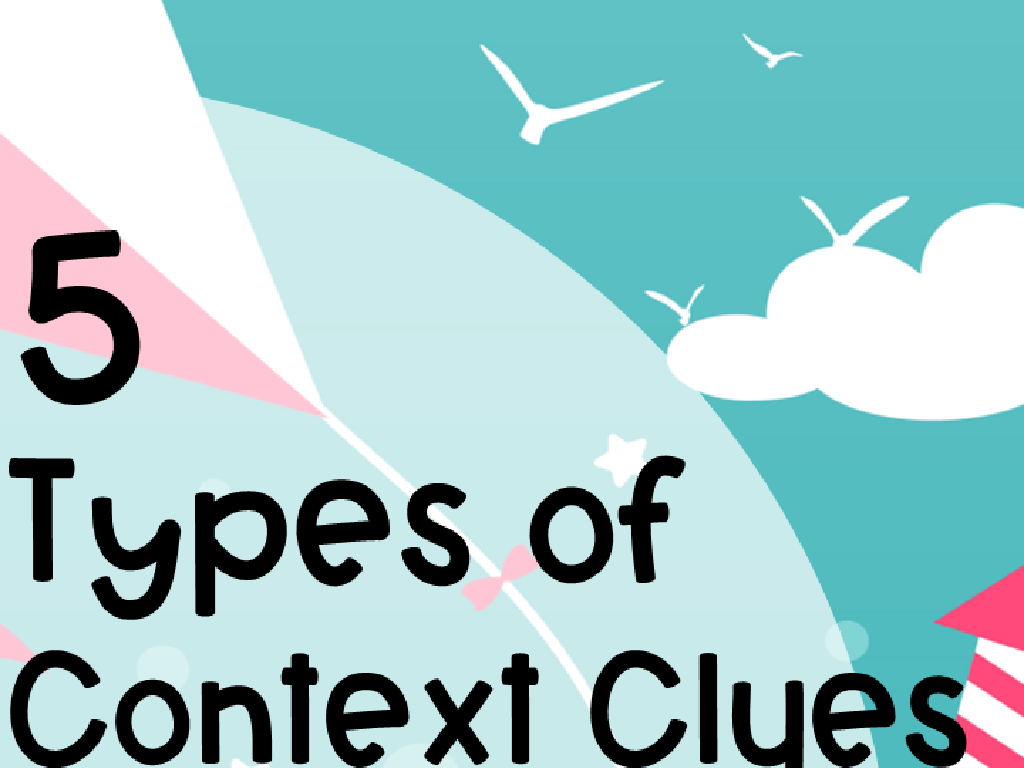Read And Construct Flowering Plant Life Cycle Diagrams
Subject: Science
Grade: Third grade
Topic: Plants
Please LOG IN to download the presentation. Access is available to registered users only.
View More Content
The Life Cycle of Flowering Plants
– Learn plant life cycles
– How do plants grow?
– From seed to sprout, then a mature plant
– Plant reproduction
– Flowers help plants make seeds
– Importance of flowering plants
– They give us food, oxygen, and beauty
|
This slide introduces the concept of the life cycle of flowering plants. It’s crucial for students to understand that all plants start from seeds and go through stages of growth such as sprouting, maturing, and eventually reproducing through flowers. Flowering plants are not only important for their aesthetic value but also for their role in the ecosystem, including providing food and oxygen. Encourage students to think about the different flowering plants they know and their significance. Activities can include drawing the life cycle stages, planting seeds in class, or a field trip to a garden to observe flowering plants.
Understanding Plant Life Cycles
– What is a life cycle?
– Sequence of stages from birth to adulthood
– Every organism has one
– Humans, animals, and plants all grow and change
– Life cycles vary in complexity
– From simple algae to complex mammals
– Flowering plants’ life cycle stages
– We’ll learn the stages from seed to flowering
|
This slide introduces the concept of life cycles, a fundamental principle in biology that describes the series of changes an organism undergoes from the beginning of its life until it reaches adulthood. It’s important to convey to the students that all living things, including themselves, go through a life cycle. Some life cycles are straightforward, while others are more intricate, involving various stages of growth and development. For flowering plants, the life cycle includes stages such as seed, germination, growth, flowering, pollination, and seed production. Encourage the students to think about their own growth and compare it to that of a plant. This will help them relate to the material and understand the universality of life cycles.
Stages of a Flowering Plant Life Cycle
– Seed Stage: Life begins as a seed
– A tiny seed contains a future plant inside.
– Germination: Sprouting of the seed
– With water and warmth, a seedling emerges.
– Growth: Leaves and roots develop
– The seedling uses sunlight to grow bigger.
– Flowering: Flowers form on the plant
– Flowers are the reproductive part of the plant.
|
This slide introduces the students to the life cycle of a flowering plant, starting from the seed stage and progressing through germination, growth, and flowering. It’s crucial to explain that the seed is like a baby plant that is waiting for the right conditions to start growing. During germination, the seed absorbs water and begins to sprout, which is the first sign of life. As the plant grows, it develops leaves for photosynthesis and roots for nutrient absorption. Flowering is an important stage where the plant produces flowers that will eventually lead to seed formation after pollination. Use diagrams to illustrate each stage and encourage students to think of examples of plants they have seen in these different stages.
The Germination Process of a Seed
– Seed requirements for growth
– Seeds need water, air, and warmth to sprout.
– Radicle emergence from seed
– The radicle is the first root to break through the seed coat.
– Shoot reaches for the light
– The shoot grows upward, seeking sunlight to start photosynthesis.
|
This slide introduces the germination process, which is the first stage of a flowering plant’s life cycle. Begin by discussing the conditions necessary for a seed to start growing, emphasizing the importance of water, air, and the right temperature. Explain that the seed coat’s breakage is a sign of successful germination, followed by the growth of the radicle, which will become the main root. Then, describe how the shoot, which will become the stem and leaves, pushes upwards towards the light to start photosynthesis. Use diagrams to illustrate each step and consider bringing in seeds for a hands-on demonstration. Encourage students to think about how these conditions are met in nature or in a garden.
Photosynthesis: How Plants Make Food
– Leaves are food factories
– Sunlight, water, CO2 make food
– Plants use these ingredients with sunlight to create their own food.
– Photosynthesis fuels growth
– This process is essential for the plant’s growth and health.
– Flowers develop from energy
– The energy from photosynthesis helps the plant to bloom.
|
This slide introduces the concept of photosynthesis to third-grade students. Begin by explaining that leaves act like little food factories for the plant, using sunlight, water, and carbon dioxide to create food. This process is known as photosynthesis. It’s crucial for the plant’s growth, as it provides the energy needed to develop flowers and continue the life cycle. Use simple language to describe how plants convert these ingredients into energy. You can compare it to how students need food to grow and be healthy. Encourage students to think about the importance of sunlight and water for plants, and how without photosynthesis, there would be no flowers.
Pollination and Seed Formation
– Flowers attract insects
– Bright colors and sweet scents lure bees and butterflies
– Insects carry pollen
– As insects visit, they pick up pollen on their bodies
– Pollen moves between flowers
– When visiting new flowers, insects deposit pollen
– Seeds are produced
|
This slide introduces the concept of pollination and how it leads to seed formation, which is a crucial part of the flowering plant life cycle. Explain that the bright colors and scents of flowers are not just for beauty; they serve a purpose to attract insects. These insects, such as bees and butterflies, are essential for pollination because they transfer pollen from one flower to another. This transfer allows plants to produce seeds, which will grow into new plants. Encourage students to think about the role insects play in the environment and how important they are for plant reproduction. You can also discuss the different types of insects that might visit a flower and how each might be suited to pollination.
Seed Dispersal Methods
– Seeds travel for new growth
– Wind, water, animals help seeds
– Dandelions float on the wind, coconuts float on water, burrs stick to animal fur
– Bursting pods spread seeds
– Peas and beans have pods that dry and pop
– Each plant has unique methods
– Maple trees have ‘helicopters’, and some plants rely on digestion by animals
|
This slide introduces students to the concept of seed dispersal, an important part of the flowering plant life cycle. Explain that seed dispersal is the way seeds move from the parent plant to new places where they can grow. Discuss the various natural methods seeds use to travel, such as being carried by the wind, floating on water, hitching a ride on animals, or being forcefully ejected from the plant. Provide examples for each method to help students visualize the process. Encourage students to think about the plants they know and how those plants might disperse their seeds. This understanding of seed dispersal sets the stage for learning about the full life cycle of flowering plants.
Plant Life Cycle Diagram Activity
– Draw a flowering plant life cycle
– Label each life cycle stage
– Start with seeds, then sprout, plant, flower, and seeds again
– Color your diagram creatively
– Use colors to show different stages
– Share your diagram with the class
|
This activity is designed to help students understand the life cycle of a flowering plant by engaging them in a hands-on drawing exercise. Provide a simple diagram template with the stages of the life cycle: seed, germination, growth, flowering, pollination, and seed production. Encourage students to label each part correctly and use a variety of colors to differentiate the stages. This will aid in visual learning and memory retention. After completing the diagrams, have students present their work to the class, explaining each stage of the cycle. This reinforces their understanding and allows them to practice their presentation skills. Prepare to offer guidance and answer questions as students work on their diagrams.
Class Activity: Planting Seeds
– Plant your own seeds
– Observe growth over time
– Each student gets a pot and seeds
– You’ll have your own pot, soil, and seeds to start your plant’s life cycle.
– Water and sunlight are crucial
– Remember, plants need water and light to grow healthy and strong.
|
This hands-on activity is designed to help students understand the life cycle of a flowering plant by directly engaging in the planting process. Provide each student with a pot, soil, and a selection of seeds. Guide them through the process of planting the seeds and discuss the importance of proper care, including regular watering and exposure to sunlight. Over the following weeks, have students observe and record the changes in their plants, noting each stage of growth. This will give them a personal experience of the plant life cycle from seed to flower. Possible activities include measuring plant growth, journaling observations, drawing the different stages, and discussing the factors that affect plant growth.
Flowering Plant Life Cycle: Review
– Recap the plant life cycle stages
– Discuss importance of plants
– Plants give us oxygen and food, and they help the environment.
– Congratulate the class
– Reminder about seedling care
– Water it, give it sunlight, and be gentle.
|
This slide is meant to summarize the lesson and reinforce the key concepts about the life cycle of flowering plants. Start by revisiting the stages: germination, growth, flowering, pollination, and seed spreading. Engage the class by asking them to reflect on the importance of plants to humans and the environment, emphasizing their role in providing oxygen, food, and ecological balance. Praise the students for their efforts and participation in today’s lesson. End with a gentle reminder about the responsibility of taking care of their seedlings, providing basic care tips like proper watering, sunlight exposure, and handling. This will help instill a sense of stewardship for living things and an appreciation for the natural world.

